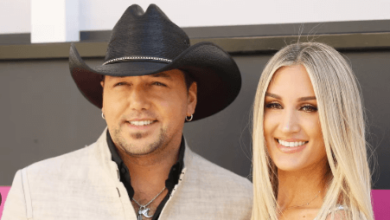What are the key strategies for success in each phase of eventing?

Introduction
Eventing, also known as horse trials, is an equestrian event that combines dressage, cross-country, and show jumping. This demanding sport tests the horse and rider’s versatility, endurance, and skill across three different disciplines. Success in eventing requires a strategic approach tailored to each phase of the competition. This comprehensive guide outlines key strategies for excelling in each phase of eventing, ensuring both horse and rider are well-prepared and poised for victory.
Introduction to Eventing
History and Evolution of Eventing
Eventing has a rich history that dates back to military training exercises designed to test a horse’s endurance, speed, and agility. Over time, it evolved into a competitive sport, with the first Olympic appearance in 1912. Understanding its origins helps riders appreciate the skills and disciplines required.
The Three Phases Explained
Eventing consists of three distinct phases:
- Dressage: Focuses on the horse’s ability to perform a series of predetermined movements, showcasing precision, suppleness, and harmony with the rider.
- Cross-Country: Tests the horse and rider’s endurance and jumping ability over varied terrain and obstacles.
- Show Jumping: Evaluates the horse’s agility and the rider’s precision over a series of fences in an arena.
Importance of Strategy in Eventing
Success in eventing depends not only on the horse’s natural abilities but also on the rider’s strategic planning. Each phase requires different skills and preparation, making a well-rounded approach essential for top performance.
Dressage Phase
Fundamentals of Dressage
Dressage is the foundation of all riding disciplines, emphasizing the importance of balance, rhythm, and obedience. The key to success lies in the horse’s ability to respond promptly and accurately to the rider’s cues.
Key Dressage Movements
Important movements include the trot, canter, and halt, as well as lateral movements like the leg yield and half-pass. Mastering these movements enhances the horse’s flexibility and responsiveness.
Training Techniques
Effective training involves regular practice and positive reinforcement. Riders should focus on developing their horse’s strength and flexibility through a variety of exercises.
Mental Preparation
Mental preparation is crucial for both horse and rider. Maintaining focus and calm under pressure can significantly impact performance.
Common Mistakes and How to Avoid Them
Common mistakes in dressage include incorrect posture, uneven gaits, and poor transitions. These can be avoided through consistent practice and attention to detail.
Cross-Country Phase
Course Walkthrough and Analysis
Walking the cross-country course beforehand allows riders to plan their strategy, identify potential challenges, and determine the best approach for each obstacle.
Building Endurance and Stamina
Cross-country demands high levels of endurance from both horse and rider. Regular conditioning and stamina-building exercises are essential for success.
Jumping Techniques for Cross-Country
Riders should practice various jumping techniques to handle different types of obstacles, such as banks, ditches, and water complexes.
Safety Considerations
Safety is paramount in cross-country. Using appropriate tack and equipment, and ensuring the horse is fit and healthy, reduces the risk of injury.
Tack and Equipment
Choosing the right tack and equipment, such as protective boots and saddles designed for cross-country, enhances performance and safety.
Recovering from Mistakes
Mistakes happen, but the ability to recover quickly and stay focused is key. Riders should practice handling unexpected situations to build resilience.
Show Jumping Phase
Course Design and Strategy
Understanding the layout and design of the show jumping course helps riders plan their approach, taking into account the horse’s strengths and weaknesses.
Precision and Timing
Precision in executing jumps and timing each movement is critical. Riders should work on developing a seamless partnership with their horse to achieve this.
Maintaining Rhythm and Balance
Maintaining a consistent rhythm and balance throughout the course is essential for avoiding faults. Practice and experience help in developing these skills.
Training Drills
Specific training drills, such as grid work and pole exercises, improve the horse’s jumping ability and coordination.
Common Faults and Corrections
Common faults in show jumping include knocking down rails and refusals. Identifying and correcting these issues through targeted training is crucial.
Mental Focus and Confidence
Confidence and mental focus are vital for success. Riders should develop techniques to stay calm and composed under pressure.
General Strategies for Eventing
Balancing Training Across Phases
Balancing training across all three phases ensures the horse remains versatile and well-prepared for each aspect of eventing.
Nutrition and Care for Horses
Proper nutrition and care are essential for maintaining a horse’s health and performance. A balanced diet, regular veterinary check-ups, and appropriate rest are key.
Rider Fitness and Health
Riders must also maintain their fitness and health through regular exercise, proper diet, and mental conditioning.
Importance of Rest and Recovery
Rest and recovery are critical for preventing injuries and ensuring peak performance. Both horse and rider need adequate downtime between training sessions and competitions.
Understanding Competition Rules
Familiarity with competition rules and regulations helps riders avoid penalties and ensures a smooth performance.
Building a Strong Rider-Horse Partnership
A strong bond between rider and horse is the foundation of success in eventing. Trust and communication are built through consistent training and mutual respect.
Advanced Strategies
Analyzing Performance and Making Adjustments
Regular performance analysis helps identify areas for improvement. Riders should be open to feedback and willing to make necessary adjustments.
Advanced Dressage Techniques
Advanced dressage techniques, such as piaffe and passage, enhance the horse’s athleticism and precision.
Mastering Complex Cross-Country Obstacles
Mastering complex cross-country obstacles requires practice and a thorough understanding of each type of jump.
Show Jumping at Higher Levels
Competing at higher levels in show jumping demands advanced skills and greater precision. Continuous training and experience are vital.
Mental Toughness and Focus
Developing mental toughness and focus is essential for handling the pressures of competition. Techniques such as visualization and mindfulness can be beneficial.
Utilizing Technology and Data Analysis
Technology and data analysis tools can provide valuable insights into performance, helping riders make informed decisions about their training and competition strategies.
Case Studies of Successful Eventers
Profiles of Top Riders
Studying the careers of top eventers provides inspiration and practical insights into achieving success.
Lessons Learned from Elite Competitors
Elite competitors offer valuable lessons in perseverance, strategy, and technique.
Real-Life Applications of Strategies
Real-life examples of successful strategies illustrate how theoretical concepts can be applied in practice.
FAQs
What are the key strategies for success in each phase of eventing?
- Success in eventing requires a strategic approach tailored to each phase: dressage, cross-country, and show jumping. Key strategies include consistent training, proper nutrition and care for the horse, and mental preparation for both horse and rider. Balancing training across all phases ensures a well-rounded performance.
How can riders improve their dressage scores?
- Riders can improve their dressage scores by focusing on precision, balance, and rhythm in their movements. Regular practice, positive reinforcement, and seeking feedback from experienced trainers can help refine techniques and address weaknesses.
What are the best practices for the cross-country phase?
- Best practices for the cross-country phase include thorough course analysis, building endurance and stamina, and practicing various jumping techniques. Safety considerations, proper tack and equipment, and the ability to recover from mistakes are also crucial.
How do you prepare a horse for show jumping?
- Preparing a horse for show jumping involves regular training drills, such as grid work and pole exercises, to improve coordination and jumping ability. Understanding the course design, maintaining precision and timing, and building confidence through consistent practice are key.
What common mistakes should be avoided in eventing?
- Common mistakes in eventing include poor transitions in dressage, lack of endurance in cross-country, and faults in show jumping. Avoiding these mistakes requires consistent training, attention to detail, and the ability to recover quickly from errors.
How important is mental preparation in eventing?
- Mental preparation is crucial for success in eventing. Both horse and rider need to stay focused and calm under pressure. Techniques such as visualization, mindfulness, and developing a strong bond with the horse can enhance mental toughness and confidence.
Conclusion
Eventing is a challenging but rewarding equestrian sport that tests the skills and partnership of horse and rider across three distinct phases. By following the key strategies outlined in this guide, riders can improve their performance and achieve success in each phase of eventing. Consistent training, proper care, and mental preparation are essential components of a winning strategy. Whether you are a novice or an experienced competitor, understanding and implementing these strategies will help you excel in the exciting world of eventing.







